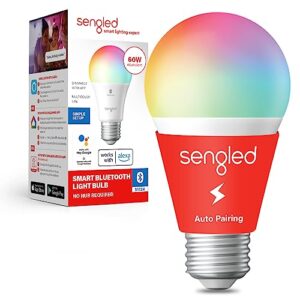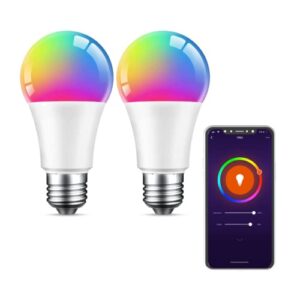How To Make My Light Switch Smart?
Key Takeaways
- The first step in making your light switch smart is to choose the right smart light switch that suits your needs.
- Once you have chosen the right smart light switch, it’s time to install it.
- Once your smart light switch is installed and set up, you can start enjoying its benefits.
If you’re looking to upgrade your home to a smart home, one of the easiest and most convenient ways to start is by making your light switches smart. By doing so, you can control your lights remotely, set schedules, and even integrate them with voice control devices for a hands-free experience. In this article, we will discuss the steps to make your light switch smart and explore some of the best options available in the market.
Step 1: Choose the Right Smart Light Switch
The first step in making your light switch smart is to choose the right smart light switch that suits your needs. There are several options available, each with its own set of features and compatibility. Some popular choices include:
- Leviton Decora Smart WiFi Motion sensing Dimmer
- GE Cync Smart Switch Motion Sensing Dimmer
- Brilliant Control Panel
- Lutron Caseta Smart Home Dimmer
- Jasco Embrighten (Z-Wave switch)
These smart light switches offer features such as motion sensing, dimming capabilities, and compatibility with popular smart home systems.
Step 2: Install the Smart Light Switch
Once you have chosen the right smart light switch, it’s time to install it. The installation process may vary slightly depending on the specific switch and your electrical setup, but here are the general steps to follow:
- Turn off the power at the fuse box and use a voltage meter to ensure the circuit is not live. Safety is of utmost importance.
- Remove the existing switch by unscrewing the screws on the wall plate and on the switch itself.
- Examine the wiring setup and ensure you have a ground wire, “in” wire, “out” wire, and neutral wire.
- Disconnect the old light switch by disconnecting each wire one by one, labeling them if necessary.
- Connect the wires on the smart light switch to the corresponding wires in the wall using wire connectors.
- Test the connections by turning on the power and checking if the switch works.
- Secure the smart light switch in place and organize the wire connections in the wall box.
- Screw on the wall plate and set up the smart light switch using the accompanying app.
- Connect the smart light switch to your Wi-Fi network and integrate it with voice control devices if desired.
It is important to refer to the specific instructions provided with your smart light switch as the installation process may vary for different models.
Step 3: Enjoy the Benefits of a Smart Light Switch
Once your smart light switch is installed and set up, you can start enjoying its benefits. Here are some of the advantages of having a smart light switch:
- Remote control: You can control your lights from anywhere using your smartphone or tablet.
- Scheduling: Set timers and schedules to automate your lights based on your preferences and routines.
- Voice control: Integrate your smart light switch with voice control devices like Amazon Alexa or Google Assistant for a hands-free experience.
- Energy savings: Some smart light switches offer energy monitoring features, allowing you to track and reduce your energy consumption.
By making your light switch smart, you can enhance the convenience, comfort, and energy efficiency of your home.
Related Websites:
FAQs:
Q: What are the benefits of upgrading to smart light switches?
Upgrading to smart light switches offers several benefits. You can control your lights remotely, set schedules and timers, save energy, and enhance the overall convenience and comfort of your home lighting system.
Q: How do smart light switches integrate into a smart home system?
Smart light switches can easily integrate into a smart home system. They can connect to a central hub or directly to your home Wi-Fi network, allowing you to control and automate your lights through a mobile app or voice commands via compatible devices like smart speakers.
Q: What factors should I consider before making my light switch smart?
Before making your light switch smart, consider factors such as compatibility with your existing home wiring, wireless connectivity options, smart home hub requirements (if applicable), and the availability of a neutral wire, which is important for proper functionality.
Q: What are the troubleshooting steps for connectivity issues with smart light switches?
If you encounter connectivity issues with your smart light switches, try the following troubleshooting steps: ensure a stable Wi-Fi connection, check if the switch is within range, restart the switch and the router, update firmware if available, and reset the switch if necessary.
Q: How can I enhance the smart light switch experience?
To enhance the smart light switch experience, you can explore additional features and functionalities offered by the switch, integrate them with voice assistants for hands-free control, create automation and scheduling routines, and even explore third-party apps or software for extended capabilities.






